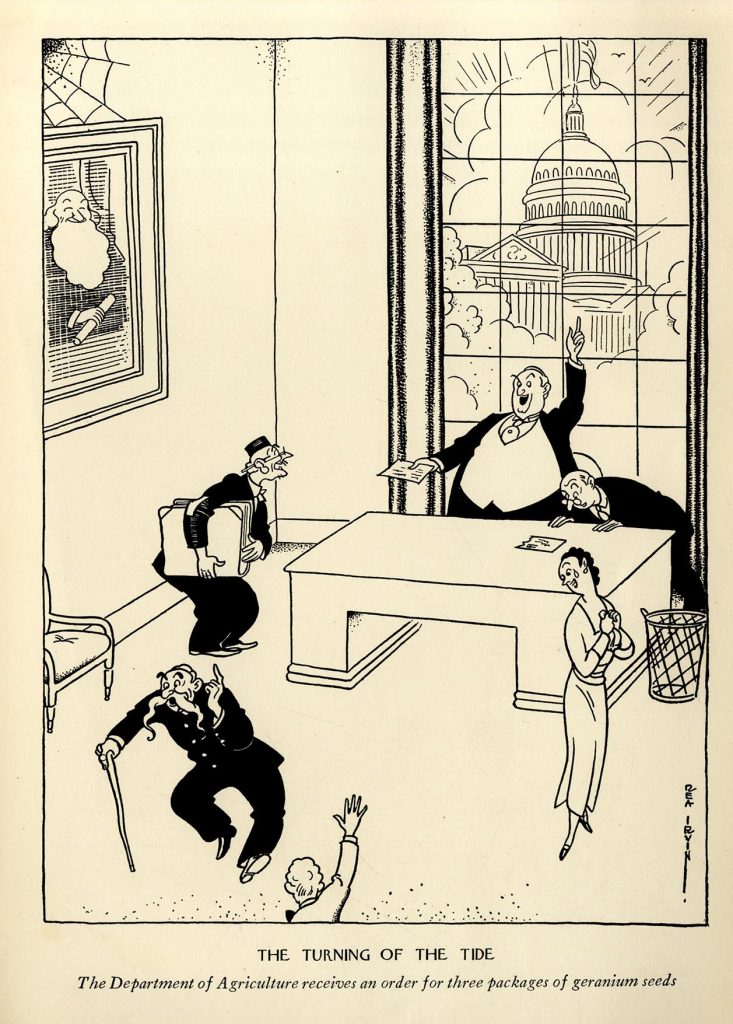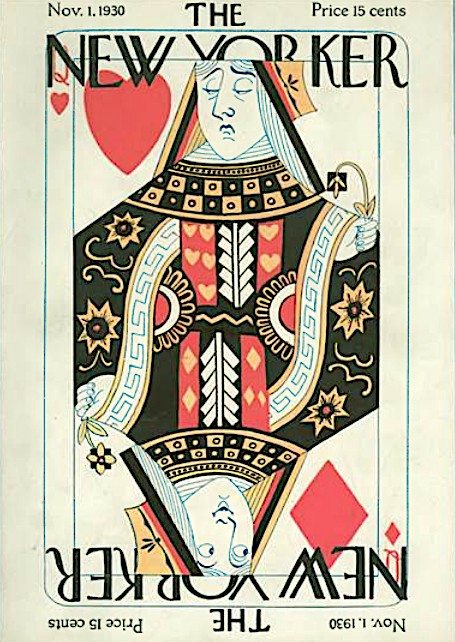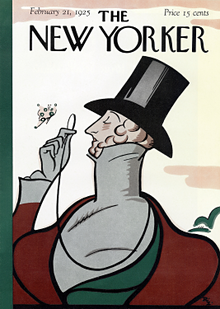The Launch of The New Yorker
Culture

Harold W. Ross founded and published the first issue of The New Yorker magazine on February 21, 1925. This was the start of a weekly magazine complete with journalism, essays, satire, fiction poetry, and cartoons as well as many forms of illustration in their covers and posters. The intention was to be light-hearted and focus on the lives of New Yorkers and the vibrant culture they experienced all within a “fifteen cent comic paper”. Today the magazine is considered to be the most influential and reliable of our time – acclaimed for its in-depth journalism, discussions on social, political, and cultural issues, commentary, and humour targeted to its sophisticated, well-educated, and left-leaning audience. The magazine’s reach is so large and strong that it has been observed to change to guide the opinion of the public and shape the tone of liberal and democratic political parties.
Design


It’s rare to have a single artist dominate the art of one magazine, but Rea Irvin is among the few with such an enduring influence on the New Yorker magazine. Irvin was there from the start as the magazine’s first art editor and he adorned each issue with his defined style. He was a witty, suave, socially and culturally aware fellow who impacted the illustration, magazine design, the typography of the day and continues to press influence on the design of today James Thurber has said “the invaluable Irvin, artist, ex-actor, wit, and sophisticate about town and country, did more to develop the style and excellence of The New Yorker’s drawings and covers than anyone else, and was the main and shining reason that the magazine’s comic art in the first two years was far superior to its humorous prose.”

Irvin created many iconic illustrations filled with bright colours and bold lines, but is famous for his contribution to the New Yorker’s layout and design. He added the column rules that are uniquely squiggly and separate illustrations from text and for the addition of a “cover strap” that was used for the margins. Even more so than this, Irvin is known for “Irvin Type”, the lettering he designed to be the signature display typeface of the magazine. It would be used on the nameplate, headlines and the masthead above the section “The Talk of the Town”. Irvin’s inspiration likely came from a pamphlet called “Journeys to Bagdad ” where Allen Lewis’s woodcut type was shown. Irvin asked Lewis to create an alphabet for him, but with no interest in the project, Allen suggested Irvin create his own and thus “Irvin” was created.

Emily Gordon has written that “Irvin’s own intimacy with classic form and craft, and his genial willingness to share that expertise … allowed him to create a complete device: a design, a typeface, a style, and a mood that would be instantly recognizable, and eminently effective, almost a century later.”
Character
Rea Irvin is also credited for the creation of Eustace Tilley, the infamous dandy that you likely recognize as the cover portrait of the New Yorker. Tilley was first drawn on the cover premier issue in February of 1925 and appeared annually, every February, until 1994. This cover originally depicted a set of theatre curtains pulling away to reveal the New York skyline, but in a last minute change the infamous dandy looking through a monocle at a butterfly became Irvin’s replacement. This new character embodied the affluence and humour of New Yorkers and became a loveable feature of the magazine. To have a sidebar character within a commentary magazine was not seen previously to Irvin and became a very notable part of the New Yorker and journals at the time.

- http://www.tfaoi.com/aa/1aa/1aa398.html
- https://www.newyorker.com/

Leave a Reply